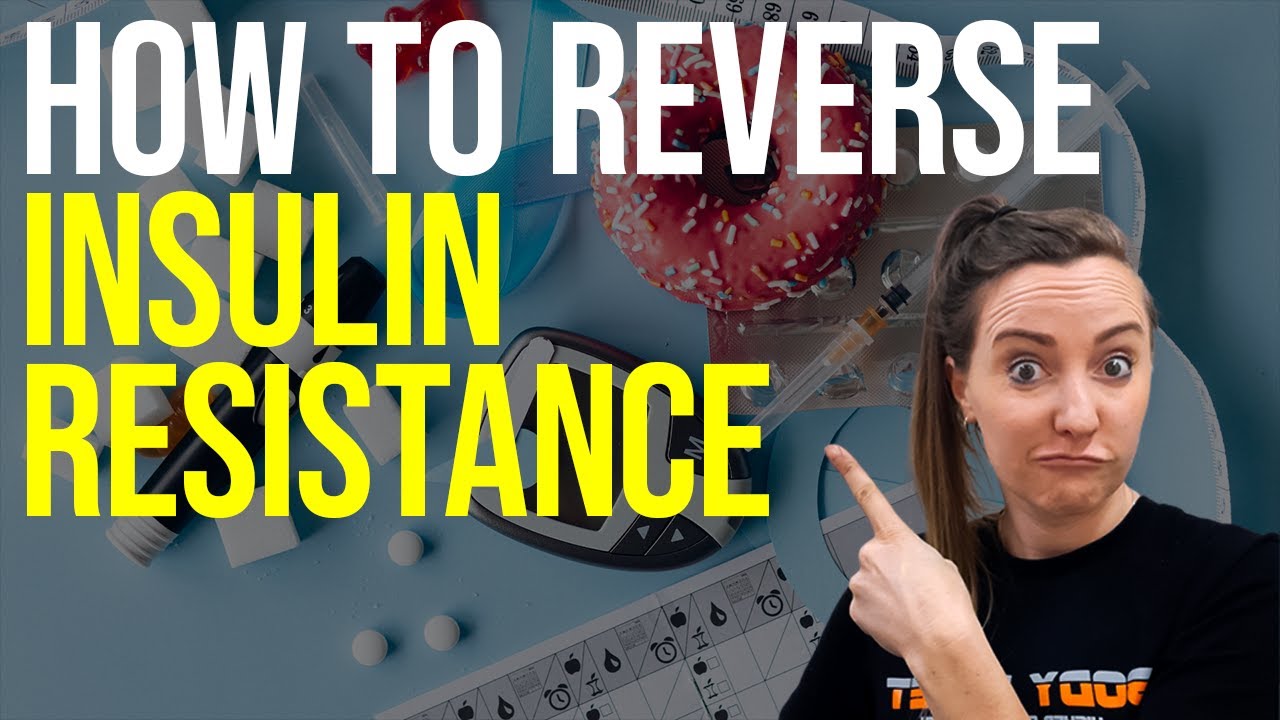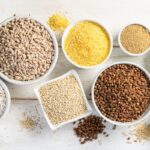How Long Does It Take to Reverse Insulin Resistance?
How Long Does It Take to Reverse Insulin Resistance? Well, Insulin resistance is a complex and increasingly common metabolic condition in which the body’s cells—especially those in the muscles, liver, and fat—do not respond properly to insulin.
Insulin is a vital hormone produced by the pancreas that helps regulate blood sugar (glucose) levels by allowing glucose to enter cells for energy or storage.
When this process is impaired, glucose builds up in the bloodstream, forcing the pancreas to produce more insulin in an attempt to maintain balance. This overproduction of insulin is known as hyperinsulinemia, and if left unchecked, it can contribute to a host of health complications.
What Is Insulin Resistance?
In simple terms, insulin resistance, sometimes referred to as impaired insulin sensitivity, means your body isn’t using insulin effectively. Under normal conditions, insulin acts as a “key” that unlocks cells to allow glucose from the bloodstream to enter.
However, when cells become resistant to insulin’s signal, the glucose remains in the blood, leading to elevated blood sugar levels. To compensate, the pancreas releases even more insulin, creating a cycle that can, over time, exhaust the pancreas and lead to chronic conditions like prediabetes and Type 2 diabetes.
Who Is Affected by Insulin Resistance?
Insulin resistance can affect a wide range of individuals, including those who are not diabetic. It may occur temporarily due to factors such as certain medications (e.g., steroids) or can become a chronic condition due to poor lifestyle choices or genetic predisposition.
Key risk factors include:
- Excess body fat, especially abdominal fat
- Physical inactivity
- A family history of Type 2 diabetes, prediabetes, or polycystic ovary syndrome (PCOS)
- Hormonal disorders such as PCOS
- Cardiovascular disease
- Metabolic syndrome
- Metabolic dysfunction-associated steatotic liver disease (MASLD)
Even people with Type 1 diabetes can develop insulin resistance in addition to their underlying condition.
Reversing Insulin Resistance: Is It Possible?
One of the most frequently asked questions is: how long does it take to reverse insulin resistance?
The answer depends on various factors, including the severity of the condition, individual health status, lifestyle changes, and commitment to consistent, long-term improvements. While insulin resistance doesn’t develop overnight, it can begin to improve within weeks of adopting healthier habits.
In general, noticeable changes in insulin sensitivity can begin to occur within 4 to 12 weeks of implementing dietary and lifestyle adjustments.
For some, it may take several months or longer to achieve optimal insulin function, especially if the condition has been present for years or is accompanied by obesity or other metabolic disorders.
Effective Strategies to Reverse Insulin Resistance
To successfully reverse insulin resistance, consistency is key. Here are some science-backed strategies:
- Regular Physical Activity: Engaging in both aerobic and resistance training exercises can significantly improve insulin sensitivity. Even moderate-intensity activities like brisk walking or cycling can make a difference.
- Weight Loss: Losing even 5–10% of body weight can have a powerful effect on reversing insulin resistance, especially in individuals with excess belly fat.
- Balanced Diet: A diet rich in whole foods—such as vegetables, lean proteins, whole grains, and healthy fats—can help stabilize blood sugar and reduce insulin spikes. Limiting refined sugars and processed carbs is crucial.
- Intermittent Fasting: Some research supports the benefits of intermittent fasting for improving insulin sensitivity and promoting metabolic health.
- Quality Sleep: Poor sleep can increase insulin resistance. Aim for 7–9 hours of quality sleep per night.
- Stress Management: Chronic stress can increase cortisol levels, which negatively affects insulin sensitivity. Techniques such as mindfulness, yoga, or deep breathing exercises can help.
What Are the Symptoms of Insulin Resistance?
Insulin resistance is often called a “silent” condition because it can develop gradually without causing any noticeable symptoms—especially in the early stages. If your pancreas is still able to produce enough insulin to keep your blood sugar levels within a normal range, you may not feel any different. However, this doesn’t mean the condition isn’t progressing beneath the surface.
Over time, the constant demand on your pancreas to produce more insulin can wear down the insulin-producing beta cells.
Once the pancreas can no longer keep up, blood sugar levels begin to rise, and that’s when symptoms may start to appear.
Common Symptoms of High Blood Sugar Due to Insulin Resistance
As insulin resistance progresses and blood glucose levels remain elevated, individuals may begin to experience symptoms such as:
- Unexplained weight loss – Despite eating normally or more than usual
- Chronic fatigue – A persistent feeling of tiredness or low energy
- Increased thirst – Often accompanied by dry mouth
- Frequent urination – Especially noticeable at night
- Increased hunger – Particularly cravings for carbs and sweets
- Blurred vision – A result of fluid shifting in the lenses of the eyes
- Recurring yeast infections – Often due to elevated sugar levels that encourage yeast growth
Early Warning Signs of Prediabetes
In many cases, people with prediabetes—a precursor to Type 2 diabetes—don’t experience any clear symptoms. However, some subtle physical signs may include:
- Acanthosis nigricans – Darkened, velvety patches of skin, usually found on the neck, armpits, or groin
- Skin tags – Small, soft growths of skin, often near the neck or armpits
- Vision changes – Such as blurred vision or signs of early diabetic retinopathy
These signs often go unnoticed for years, which is why routine health check-ups and blood sugar screenings are so important—especially if you have risk factors such as obesity, a sedentary lifestyle, or a family history of diabetes.
Recognizing Symptoms and Taking Action: Why Timing Matters
One of the most pressing questions people ask once they notice symptoms is: how long does it take to reverse insulin resistance? The answer largely depends on when you catch it. The earlier you detect the condition and take proactive steps to address it, the faster you can improve your insulin sensitivity and potentially reverse the issue.
For those who begin lifestyle changes—such as improving their diet, exercising regularly, and managing stress—within the early stages, improvements can often be seen in as little as 4 to 12 weeks. However, reversing insulin resistance completely may take several months or longer, depending on individual factors and consistency of treatment.
What Causes Insulin Resistance?
While researchers are still uncovering the full picture of how insulin resistance develops, it’s clear that both genetic and lifestyle factors play significant roles.
Some individuals may inherit a predisposition to insulin resistance through certain genetic markers, but more often than not, the condition is influenced by environmental and behavioral factors.
Understanding the root causes is key not only to managing the condition but also to answering a common and important question: how long does it take to reverse insulin resistance? The timeline for reversal often depends on how deeply these causes are ingrained and how quickly they’re addressed.
Genetic and Acquired Causes of Insulin Resistance
- Genetic Predisposition
Some people are born with genes that increase their likelihood of developing insulin resistance. These genetic factors can influence how the body processes glucose and how cells respond to insulin. While you can’t change your genetic makeup, understanding your family history can help you take early preventive measures.
- Acquired Causes of Insulin Resistance
Most causes of insulin resistance develop over time due to lifestyle and environmental influences. These include:
- Excess Body Fat (Especially Visceral Fat)
Obesity, particularly fat stored deep in the abdomen around the organs, is a major contributor to insulin resistance. Visceral fat releases inflammatory substances that interfere with insulin signaling.
➤ Note: Weight loss is one of the most effective ways to begin reversing insulin resistance. For many individuals, noticeable improvements in insulin sensitivity can be seen within 4 to 12 weeks of healthy weight loss. - Physical Inactivity
Lack of movement and exercise reduces your body’s ability to utilize insulin efficiently. Exercise not only improves insulin sensitivity but also increases muscle mass, which helps absorb more glucose from the bloodstream.
➤ Regular physical activity is a cornerstone of reversing insulin resistance and should be maintained consistently for long-term results. - Poor Dietary Habits
Diets high in refined carbohydrates, added sugars, and saturated fats contribute significantly to insulin resistance. Highly processed foods spike blood sugar and insulin levels repeatedly, wearing down the body’s response over time.
➤ Switching to a whole-food, low-glycemic diet can begin to improve insulin sensitivity within weeks. - Certain Medications
Some drugs—like corticosteroids, beta-blockers, antipsychotics, and HIV treatments—can interfere with insulin function. These medications may be necessary for managing other conditions but should be monitored carefully by a healthcare provider if insulin resistance is a concern.
Hormonal Disorders That Can Cause Insulin Resistance
Several hormonal imbalances or disorders can impair how insulin works in the body:
- Cushing’s Syndrome
This condition results from prolonged exposure to high cortisol levels. Cortisol counteracts insulin, making it harder for cells to absorb glucose effectively. - Acromegaly
A rare disorder caused by excessive growth hormone (GH), which can increase insulin resistance by affecting how cells metabolize glucose. - Hypothyroidism
An underactive thyroid slows down your metabolism and can reduce insulin sensitivity. It also contributes to weight gain, further complicating the issue.
Why Understanding the Cause Matters
Knowing what’s behind your insulin resistance is essential to tailoring an effective treatment plan. For instance, if the root cause is diet and inactivity, lifestyle changes could start improving your condition relatively quickly.
But if a hormonal imbalance or medication is at play, addressing those underlying issues is just as critical.
So, how long does it take to reverse insulin resistance?
There’s no universal timeline, but with dedicated effort—through lifestyle changes, medical treatment, or both—most people begin to see measurable improvements within a few weeks to a few months.
The earlier the condition is identified and addressed, the faster and more effectively it can be managed or even reversed.
Genetic Conditions That Cause Insulin Resistance
While most cases of insulin resistance are linked to lifestyle factors like obesity and inactivity, certain rare genetic conditions can also lead to insulin resistance.
These inherited disorders often interfere with the body’s ability to process insulin properly, either by affecting insulin receptors or disrupting the way the body stores and uses fat and energy.
Understanding the root cause—whether lifestyle or genetic—is essential not only for treatment but also for setting realistic expectations when asking: how long does it take to reverse insulin resistance? Inherited forms are typically more complex and may not be fully reversible, but symptoms can often be managed with medical care and lifestyle adjustments.
Rare Genetic Disorders That Can Cause Insulin Resistance:
- Type A Insulin Resistance Syndrome
A rare condition that affects mostly women and is often linked to abnormalities in the insulin receptor gene. It typically appears during adolescence and may present with skin changes (acanthosis nigricans), irregular periods, and elevated insulin levels. - Donohue Syndrome (Leprechaunism)
An extremely rare and severe insulin resistance disorder caused by mutations in the insulin receptor gene. It usually presents in infancy and has a poor prognosis.
Other Inherited Conditions Linked to Insulin Resistance:
- Myotonic Dystrophy
A type of muscular dystrophy that affects not only muscles but also the eyes, heart, and endocrine system, contributing to abnormal glucose metabolism. - Alström Syndrome
A rare genetic disorder that causes early-onset obesity, insulin resistance, Type 2 diabetes, vision and hearing loss, and heart issues such as dilated cardiomyopathy. - Werner Syndrome
Also known as adult progeria, this syndrome accelerates the aging process and can lead to insulin resistance alongside a range of age-related complications. - Inherited Lipodystrophy
This condition causes abnormal distribution and storage of fat in the body, severely affecting insulin sensitivity. Individuals may appear lean but have high triglyceride levels, insulin resistance, and fatty liver disease.
Diagnosis and Testing: How Is Insulin Resistance Detected?
Diagnosing insulin resistance can be challenging because it often doesn’t produce symptoms in its early stages. Many people don’t realize they have it until it progresses to prediabetes or Type 2 diabetes.
Healthcare providers use a combination of clinical evaluation and lab tests to assess your risk and detect the condition.
Evaluation Includes:
- Medical and Family History
A history of diabetes, obesity, heart disease, or hormonal disorders in your family may raise suspicion. - Physical Examination
Signs like abdominal obesity, darkened skin patches (acanthosis nigricans), or skin tags may be clues. - Reported Symptoms
Fatigue, frequent urination, or increased thirst might indicate elevated blood sugar levels.
Key Diagnostic Tests:
- Fasting Glucose Test
Measures your blood sugar after an overnight fast. Levels between 100–125 mg/dL suggest prediabetes; above 126 mg/dL indicates diabetes. - A1c Test
Reflects your average blood glucose over the past three months. An A1c between 5.7% and 6.4% signals prediabetes. - Lipid Panel
This measures cholesterol and triglycerides. Elevated triglycerides and low HDL (“good”) cholesterol often accompany insulin resistance.
Why Early Detection Matters
If insulin resistance is caught early—especially when it’s primarily driven by lifestyle—there’s a higher chance it can be reversed or at least significantly improved. This brings us back to the often-asked question: how long does it take to reverse insulin resistance?
The timeline varies widely:
- Lifestyle-based insulin resistance: Improvements can begin within 4 to 12 weeks of consistent changes in diet, exercise, and weight management.
- Genetic or hormonal-based insulin resistance: While these may not be entirely reversible, symptoms can often be controlled over time with personalized medical support.
Management and Treatment of Insulin Resistance
Insulin resistance is a complex metabolic condition, but the good news is that it’s often manageable—especially in its early stages. While certain contributing factors such as age, genetics, or underlying medical conditions may not be reversible, lifestyle modifications remain the cornerstone of treatment.
The primary goal is to improve how your body responds to insulin, reduce elevated blood sugar levels, and prevent progression to Type 2 diabetes.
If you’re wondering how long does it take to reverse insulin resistance, the answer largely depends on the severity of your condition and how consistently you implement lifestyle changes. Many people begin to see measurable improvements within a few weeks to a few months.
How Is Insulin Resistance Treated?
- Lifestyle Modifications
These are often the first—and most effective—steps in reversing insulin resistance.
- Healthy Nutrition
Your diet has a direct impact on blood glucose and insulin sensitivity. Healthcare professionals often recommend:- Reducing intake of refined carbohydrates, sugars, and unhealthy fats.
- Eating more whole, nutrient-rich foods like vegetables, fruits, legumes, and whole grains.
- Choosing lean proteins such as fish, poultry, beans, and plant-based options.
- Avoiding processed foods, red meats, and sugary beverages.
🕒 With consistent dietary changes, some individuals notice improved insulin sensitivity in as little as 4 to 12 weeks.
- Regular Physical Activity
Exercise enhances insulin sensitivity by allowing your muscles to use more glucose for energy.- Aim for at least 150 minutes of moderate-intensity activity per week (e.g., brisk walking, cycling, swimming).
- Resistance training, like lifting weights, can also boost muscle mass and glucose uptake.
- Weight Loss
Carrying excess body fat—especially around the abdomen—is a key driver of insulin resistance. Losing even 5–10% of your body weight can significantly improve insulin function.
Benefits of Lifestyle Changes
Adopting these habits consistently can:
- Reduce insulin resistance
- Stabilize blood glucose levels
- Improve cholesterol (lower LDL, raise HDL)
- Decrease blood pressure
- Lower triglyceride levels
This not only improves insulin function but also reduces the risk of developing chronic conditions like heart disease and Type 2 diabetes.
Can Medications Help With Insulin Resistance?
There are no specific drugs that directly “cure” insulin resistance, but your healthcare provider may prescribe medications to manage related conditions, such as:
- Metformin – Commonly used in prediabetes or diabetes to improve insulin sensitivity and reduce glucose production in the liver.
- Statins – Used to lower LDL (“bad”) cholesterol and reduce cardiovascular risk.
- Blood Pressure Medications – To manage hypertension, often seen in individuals with metabolic syndrome.
These medications, combined with lifestyle interventions, can support overall treatment and slow the progression of insulin resistance.
Can Insulin Resistance Be Reversed?
In many cases, yes. While not all underlying causes are reversible (e.g., genetic conditions), most people with lifestyle-driven insulin resistance can reverse or greatly reduce its impact. The timeframe varies, but studies and clinical experience suggest that:
- Mild to moderate insulin resistance can show improvement in 6 to 12 weeks with consistent lifestyle changes.
- More advanced cases may take several months or longer and may require additional medical support.
That said, reversal is not a one-time fix—it’s a long-term commitment to healthy living.
How Does Diet Affect Insulin Resistance?
Your diet plays a crucial role in blood sugar control and insulin sensitivity. One helpful tool is the glycemic index (GI), which ranks carbohydrates based on how they affect blood glucose levels.
High-GI Foods – to limit or avoid:
These foods spike blood sugar and require large amounts of insulin to stabilize:
- White bread
- Potatoes
- Sugary breakfast cereals
- Soda and sweetened beverages
- Cakes, cookies, and candy
- Certain fruits like watermelon and dates
Low-GI Foods – to include regularly:
These lead to slower, more controlled rises in blood sugar:
- Non-starchy vegetables (spinach, broccoli, asparagus)
- Whole fruits (especially berries, apples)
- Whole grains (quinoa, oats)
- Legumes (beans, lentils)
- Healthy fats (nuts, seeds)
- Lean protein (fish, poultry, tofu)
💡 A low-GI diet can begin to improve blood sugar regulation and insulin response within a few weeks, especially when paired with exercise and weight loss.
Prevention of Insulin Resistance
Insulin resistance doesn’t develop overnight, and thankfully, there are ways to reduce your risk. While some factors—like your age, ethnicity, or genetics—are beyond your control, others can be addressed through conscious lifestyle changes.
Risk Factors for Developing Insulin Resistance
Certain genetic and lifestyle elements increase your likelihood of developing insulin resistance or prediabetes. These risk factors include:
- Excess body weight, particularly fat around the abdomen (visceral fat)
- Age 45 or older
- A family history of diabetes (especially a biological parent or sibling)
- Physical inactivity or a sedentary lifestyle
- Medical conditions like high blood pressure, elevated cholesterol, or polycystic ovary syndrome (PCOS)
- Gestational diabetes during pregnancy
- History of cardiovascular events such as a stroke or heart disease
- Sleep disorders, including obstructive sleep apnea
- Smoking
Additionally, people of certain ethnic backgrounds are more likely to develop insulin resistance, including:
- Black/African American
- Hispanic/Latino
- Asian
- Middle Eastern populations
Can You Prevent Insulin Resistance?
Yes, in many cases, insulin resistance can be prevented or its impact minimized through consistent lifestyle changes. Although you can’t change factors like your genetics or age, you can lower your risk by:
- Maintaining a healthy weight for your body type
- Staying physically active—aim for at least 30 minutes of moderate exercise most days of the week
- Eating a balanced diet low in processed foods and high in fiber-rich whole foods
- Getting adequate sleep and managing stress
- Avoiding smoking and limiting alcohol intake
When it comes to how long does it take to reverse insulin resistance, prevention and reversal can often go hand-in-hand. By proactively adopting a healthier lifestyle, you can often see improvements in insulin sensitivity in as little as 4 to 12 weeks, depending on your baseline health and consistency.
Outlook and Prognosis for Insulin Resistance
If you’ve been diagnosed with insulin resistance, the good news is that it’s not necessarily a permanent condition. Many people are able to manage—and in some cases, reverse—the condition through lifestyle changes.
What to Expect
Your personal outcome with insulin resistance will depend on several factors:
- The underlying cause (e.g., genetic, hormonal, or lifestyle-related)
- The severity of your insulin resistance
- How consistently you follow your treatment or lifestyle plan
Some individuals experience only mild insulin resistance and never go on to develop prediabetes or Type 2 diabetes. Others may experience more severe resistance that requires careful, ongoing management.
If you’re asking how long does it take to reverse insulin resistance, your healthcare provider may tell you that it varies. With committed effort—such as improved diet, regular exercise, and weight loss—noticeable changes in insulin sensitivity can occur in a matter of weeks to a few months.
Potential Complications
If left unmanaged, insulin resistance can lead to several serious health complications, including:
- Type 2 diabetes
- Metabolic syndrome (a cluster of conditions including high blood pressure, high blood sugar, and abnormal cholesterol levels)
- Cardiovascular disease, including heart attack and stroke
It’s important to understand that not everyone with insulin resistance will develop these complications—but the risk is real if the condition isn’t addressed.
Why Early Action Matters
The earlier you begin making healthy changes, the better your prognosis. Regular check-ups, routine blood work, and working closely with your healthcare team can help you stay ahead of the condition.
If you’re concerned about your risk or wondering how long does it take to reverse insulin resistance, now is the time to act. Early intervention is key to turning the tide before more serious complications develop.
Final Thoughts: How Long Does It Take to Reverse Insulin Resistance?
The timeline for reversing insulin resistance varies by individual, but for many, positive changes begin within a few weeks and become more substantial over the course of 3 to 6 months. The key is consistency.
If you suspect you may have insulin resistance or are at risk, don’t wait—speak with your healthcare provider. Early action can help you take control of your health and potentially reverse the condition before it progresses further.
When to See a Healthcare Provider
If you’re experiencing any of the symptoms listed above—or if you have risk factors such as being overweight, leading a sedentary lifestyle, or having a family history of diabetes—it’s essential to talk to your healthcare provider.
Early testing and diagnosis can make a significant difference in how quickly you can reverse insulin resistance and prevent more serious complications like Type 2 diabetes, heart disease, or nerve damage.
Understanding how long it takes to reverse insulin resistance requires patience and a long-term mindset.
While some individuals may notice improvements in a few weeks, achieving lasting results typically involves ongoing lifestyle modifications and health monitoring. The encouraging news is that insulin resistance is often reversible with dedication and consistency.
If you suspect you have insulin resistance or have been diagnosed with prediabetes or Type 2 diabetes, consult a healthcare provider for personalized guidance.
Early intervention can significantly reduce the risk of more serious health complications and improve your overall quality of life.

A graduate of Computer Science and Information Management Technology. Diploma – Caregiving, Certificates – Dementia and Diabetes Awareness and Management. A researcher, blogger, songwriter, singer and acoustic guitarist. Born in an environment where natural talents such as healing are imparted at our natural birth. This natural talents of healing is the result of our genetic inheritance and the training from family environment.













